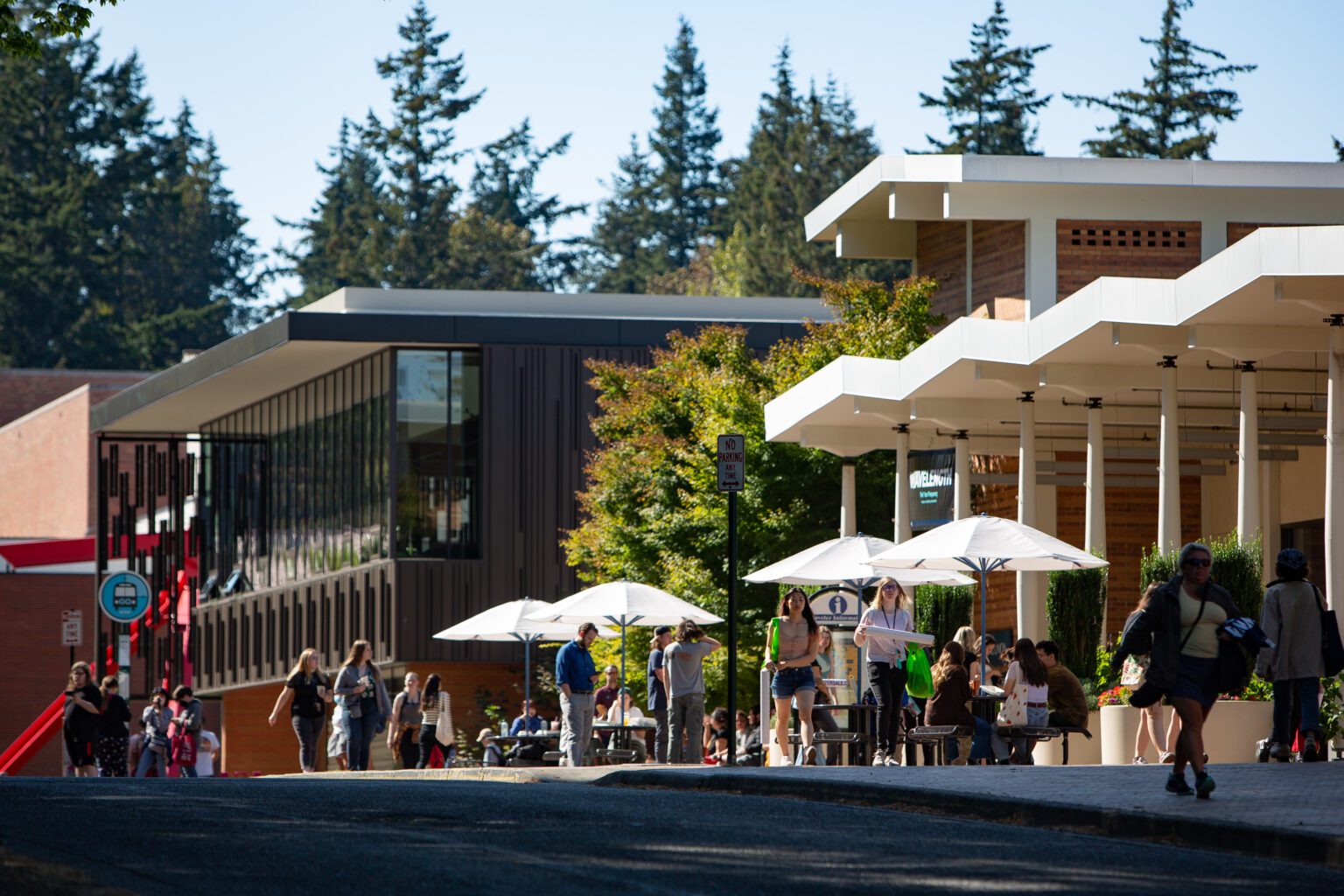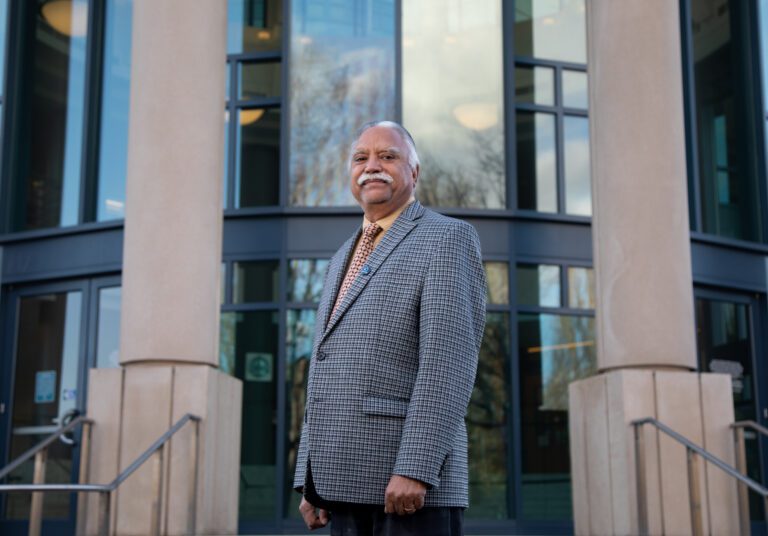Last month, Western Washington University announced a permanent 3% budget cut following declining enrollment due to the COVID-19 pandemic and a loss of federal funding that have led to a $10 million expected budget deficit.
With continued drops in enrollment — an estimated 9% loss from a pre-pandemic peak — administrators are looking for ways to make the institution viable long-term by increasing revenue (through increased enrollment) and reducing expenses.
“[The pandemic] wasn’t a strategic thing, and our response wasn’t strategic,” Provost Brad Johnson said. “Now, the turnaround is, what can we do that’s strategic from here?”
President Sabah Randhawa said he remains cautiously optimistic despite the expected $10 million deficit. The deficit accounts for 5% of the total budget, so the university is hoping a combination of immediate cost-saving measures and revenue increases over the next few years will offset the shortfall.
Solutions will avoid staffing cuts and spiking tuition rates, administrators say, but the announcement of a budget cut still sent a shockwave of stress through the university.
“I think after three years of the pandemic, it’s just a really hard message for the faculty to absorb,” said Peter Pihos, a history professor and president of the United Faculty of Western Washington. “We feel like we’re putting out so much and have been putting out, and to be told that [there will be] a 3% budget cut seems quite crazy.”
Short-term plans
In the short term, purchases over $1,000 are limited, travel requests require extra review before authorization, and vacant positions will stay empty for longer. The contingency budget was reduced from $1.2 million to $600,000, and the university will seek to “recapture new state funding,” according to the office of strategy, management and budget.
The primary focus of the budget cut is to retain faculty and staff, said Faye Gallant, the assistant vice president for strategy, management and budget.
“That retention is very important because we are, as any institution of higher education, a very people-oriented institution,” she said. “Our ability to do things comes down, first and foremost, to the people who work here.”
Currently, Johnson, who oversees all academic affairs, said he is encouraging programs to take stock of their courses, with the goal of saving time and finances and being more efficient.
“How are the enrollments propagating as a result of the pandemic? How can we make adjustments to the schedule? Can we reduce sections in certain areas so that we can make investments in others? Are we paying attention to how a group is now propagating into the upper division?” he said.
Randhawa said in the future, the administration plans to conduct academic program reviews regularly and will look at other university operations with the same scrutiny.
“We are going to do it for all the divisions,” he said. “[It’s] not as a punitive thing, but more of the formative thing.”
Pihos said he supports evaluating programs and looking for ways to reduce inefficiencies, but he’s not sure that’s enough to reduce the budget by 3% without making further cuts that would impact the quality of education.
“What can we do if academic affairs doesn’t have the resources that we need to do the job we’re here to do — educate the students of Washington?” he said.
Long-term plans
In the long term, the university hopes to increase enrollment and student retention rates to boost tuition revenue.
In fall 2022, the university recorded 3,223 first-year students, the highest to date and a positive sign for the future. In fall 2019, the university recorded a peak of 16,142 students, but enrollment has continually dropped since then, to 14,747 students this fall, according to the office of institutional effectiveness.
The president said the university is conducting a more “intentional marketing and outreach effort” to reach more students in and out of state for a baseline boost.
The university is cognizant of an impending nationwide “enrollment cliff” in 2025 due to a drop in birthrate and a reduction in students graduating from high school. Randhawa said the university is confident in boosting enrollment due to the higher birthrate in Washington and their efforts to reach students outside the traditional student model.
The flip side of the enrollment issue, however, is retention, or how the university keeps students who are enrolled.
The retention rate for students who entered in fall 2018 and returned for a second year was 82%. For the fall 2021 cohort, it dropped to 77%.
Johnson attributes decreasing retention to the volatility of the pandemic. Additionally, he said retention rates are not the same across every demographic and group of students. The university is aiming to identify those groups and provide additional support, especially in their first year of college, through initiatives like connected seminars to create cohorts and peer mentoring initiatives.
The goal, he said, is to get them through the door and then provide wraparound support to instill a sense of belonging and an understanding of what it takes to succeed.
University limited by state law, funding
The university has two budgets: the operating budget, which funds operations, staff and programming; and the capital budget, which funds projects, buildings and investments.
Funding for those budgets comes from separate avenues comprising state and federal funding, tuition and donations, and it must be used for the reason it was collected for. For example, funding raised in the capital budget to be used for the construction of the new Kaiser Borsari Hall cannot be transferred to the operating budget to fund staff raises.
The university receives roughly half of its funding from the state, the other half from tuition. Prior to 2008, Western received around 70% of its funding from the state and 30% from tuition, Johnson said. The financial crisis flipped those numbers, forcing the university to rely heavily on tuition, and eventually, it balanced out to the current 50-50 split.
State funding is typically targeted toward specific projects, programs and initiatives, Gallant said. The money isn’t provided for base operating costs.
State law limits the amount that universities can raise tuition each year (and raise revenue). This year, Gallant said, the university was limited to a 2.4% raise, which did not keep up with an 8% jump in inflation.
Administration agrees with the law, which ensures lower tuition and makes higher education accessible for more people, but it puts more of a strain on the financial standing of the university.
“We’re continuing to work with the state to clarify that our costs rise faster than tuition can support unless enrollments are growing rapidly,” Gallant said. “So in that model, which we really do support, it’s incumbent on the state, as well, to support a higher proportion.”
The university also has to fund salary increases each year, an added cost. With the high rates of inflation, Randhawa said the increases will likely be more than 2.4%.
Typically, the university and the state equally fund those increases. Last year, the state funded 66%, and the university is hoping for that ratio again.
When the university receives its expected revenues, the first thing it has to pay is staff compensation, before spending money in ways that would directly support students.
“It creates an additional pressure on the university because now that money is not available,” Randhawa said.
Johnson said it’s a “double whammy,” the drop in tuition revenue and the increase in expenses.
“It would be great if they made up their mind, let’s either fund a higher proportion of the base offering or a higher proportion of the compensation increase, or both,” he said.




